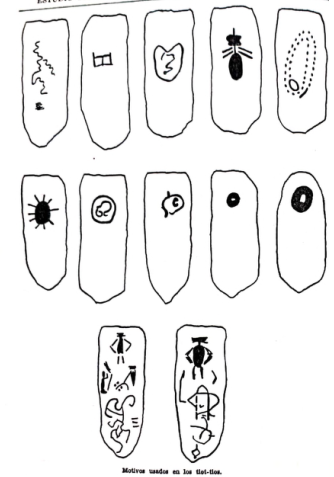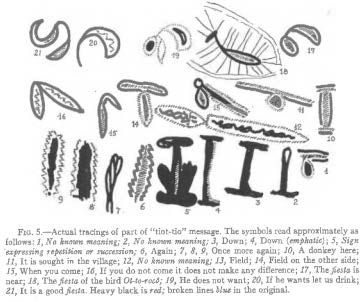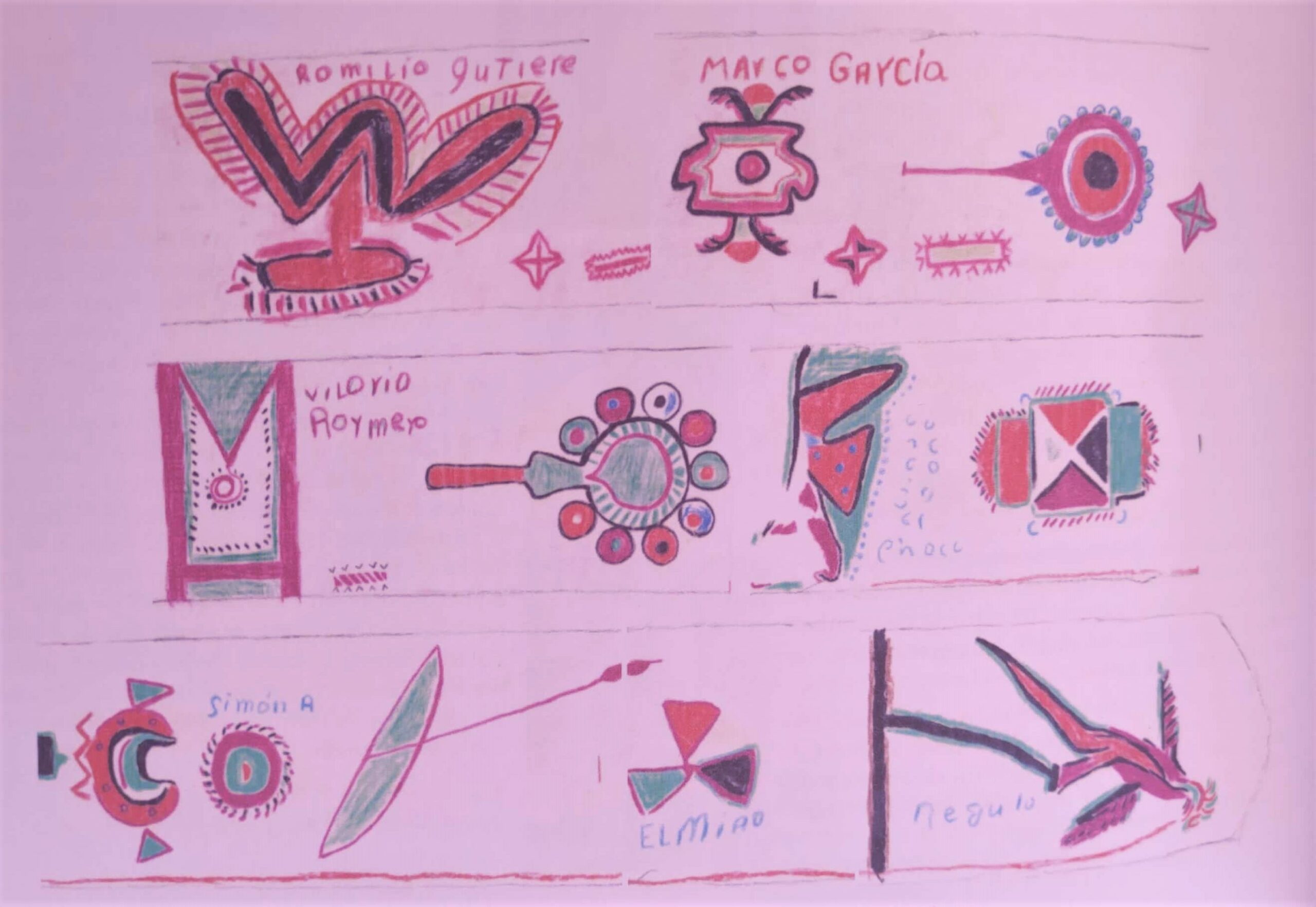Exploring Yukpa Graphic Communication systems (GCS) in Tio-tio Writing and Material Culture
This project aims to inquire for the first time into the multiple and mixed forms of graphic communication system among the Carib-speaking Yukpa, living in the Isthmo-Colombian region. So far only fragmentary accounts on Yukpa GCSs are available which nevertheless demonstrate the existence of multiple forms of graphism (e.g. Halbmayer 2016, 2018). On the one hand there is a rich iconography on woven and sewn objects, of colorful thread applications and decorations as well as face paintings. These will be for the first time systematically documented, interpreted with local interlocutors and inquired in which way they encode mythical, ritual and other knowledge. On the other hand, there is a still hardly studied unique mnemotechnic writing system among the Macoita-Yukpa called tio-tio that will be explored and reconstructed in detail.


In the few ethnographic accounts, the tio-tio writing system is described as a method used to remember the content of a message transmitted by a messenger from one settlement to another in a sort of sprechgesang while reading and touching the drawings and in a formal, protocolary presentation during visits in other villages. It is argued that the tio-tio always forms part of a formal discourse transmitting news, orders or petitions between persons of importance and that the tio-tio are read from below to above and from the right to the left. Later additional functions of the tio-tio were mentioned (Wilbert 1960), as a record of guilt of debts, as a register of songs for ritual specialists and as rank insignia of chiefs recorded on large planks. So, obviously, quite different forms of GCS were in use under the label of tio-tio and served for political-organizational, administrative, juridical and economic purposes.


In the ethnographic literature there are rather short comments on Yukpa artefacts. Just the great variety of arrows has received much attention and meticulous descriptions regarding material, fabrication and use (e.g. Reichel-Dolmatoff 1945). But there are few, and rather superficial, references to the thread applications on the arrow and hardly any comments on their meaning. However, a look at the artefacts shows that there is a great variety of signs not only on arrows, but also on woven and sewn objects such as bags, headbands and baskets, as well as in face paintings, which are labeled as tumeno a yukpa term meaning ‘its writing/pattern’. As Halbmayer (2018) has shown for bags and arrows bearing the tumeno of a snake, these signs are iconic in the way that they visually resemble the pattern of the snake and indexical as they point to the potential danger of a snake. People use these ‘signed crafts and faces’ in everyday life and on special occasions to communicate with people as well as other-than-human beings.


In this subproject, the mentioned graphic repertoire of the Yukpa will be documented, its internal logics will be analyzed and its relationship to mythical conceptions and ritual political and juridical procedures will be investigated. The analysis will be done by formal analytical procedures, fieldwork and resulting emic interpretations of meaning and iconography of material artifacts. These will be interpreted in the regional context of GCS’s of related and neighboring indigenous groups, especially the Yekuana and Wayana and neighboring Chibcha will be relevant. In terms of tio-tio writing the Kuna and the Chibcha themselves will serve as comparative backgrounds.
- Cruxent, José M. 1952. Notes on Venezuelan Archeology. In: Sol Tax (Hg.): Indian Tribes of Aboriginal America. Chicago: The University of Chicago Press (Selected Papers of the XXIXth International Congress of Americanists), S. 280-294.
- Halbmayer, Ernst. 2016. Weaving the world and the origins of life as we know it. Notions of growth, fabrication and reproduction in Yukpa origin myths. In: Revista de Antropologia 59 (1). http://www.revistas.usp.br/ra/article/view/116915/123809
- Halbmayer, Ernst. 2018. Los escritos de los objetos: hacia una textualidad material entre los yukpa. In: Mundo Amazónico 9 (1). https://revistas.unal.edu.co/index.php/imanimundo/article/view/64361
Hitchcock, Charles B. 1954. The Sierra de Perijá, Venezuela. In: The Geographical Review XLIV (1), S. 1-28.
Reichel-Dolmatoff, Gerardo. 1945. “Los Indios Motilones (Etnografía Y Lingüística).” Revista del Instituto Etnologico 2 (1): 15–115. - Schön, Miguel and Pedro L. Jam. 1953. “Cultura Social.” In: La Region De Perija Y Sus Habitantes, edited by Sociedad de Ciencias Naturales La Salle, 71–98. Maracaibo: Universidad del Zulia.
List of institutions/organizations that are involved in your sub-project:
- Department of Social and Cultural Anthropology, Institute for Comparative Cultural Research at Philips-Universität Marburg
- Resguardo Indígena Iroka, Serranía del Perijá
- Resguardo Sokorpa, Pueblo Yukpa de la Serranía del Perijá
- Since 2017 the Department of Social and Cultural Anthropology has a cooperation to encourage research and education with the Resguardo Indígena Iroka, Serranía del Perijá and the Resguardo Sokorpa, Pueblo Yukpa de la Serranía del Perijá.


